|
|
|
|
|
|
|
Achi-Kochi Japan
Showing many places to visit and foods to eat in Japan
|
|
|
|
|
|
|
|
|
|
|
|
|
Japan
> Tohoku region
> Sannai-Maruyama Archaeological Site
|
|
|
|
|
|
|
Sannai-Maruyama Archaeological Site
Aomori, Tohoku ( Achi-Kochi Japan )
|
|
|
|
|
|
|
|
|
|
|
|
|
( "Achi-Kochi" in Japanese means "Here and there" in English. )
Sannai-Maruyama Archaeological Site,
Aomori City, Aomori Pref., Tohoku
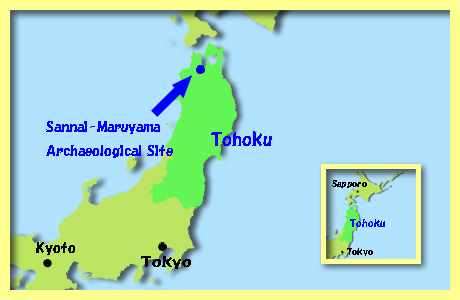
Sannai-Maruyama Archaeological Site ( above ) is located in the southwest of Aomori City, the capital city of Aomori Prefecture, Tohoku Region. The site contains the ruins of the largest Jomon settlement, where hunter-gatherers lived in Jomon Period ( B.C.14,000 - B.C. 1,000 ==> history vol.1 ).
|
|
Jomon Settlement Unearthed
A document, written in A.D.1623, states that lots of clay figurines were unearthed here. A traveler recorded in A.D.1796 that pottery shards were found here. In the 20th century archaeological excavation was conducted a few times.
In A.D.1992 Aomori Prefecture started the construction of a baseball stadium here. It resulted in the significant findings. Here unearthed were pillar-supported tower, large long houses, pillar-supported structures, pit houses, burial pits, roads, pieces of pottery and many more. Here used to be one of the largest Jomon settlements. In A.D.1994 Aomori Prefecture abandoned the constrcution of baseball stadium and decided to preserve Sannai-Maruyama Archaeological Site.
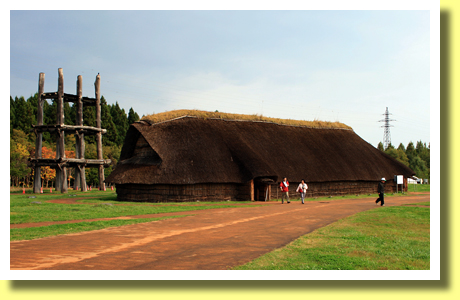
According to the excavations, various kinds of structures have been reconstructed as above. Lots of unearthed artifacts are exhibited in a nearby museum. The site is designated as one of Special National Historical Sites of Japan and is one of UNESCO World Cultural Heritage Sites. Now many tourists visit the site.
|
|
Pit Houses
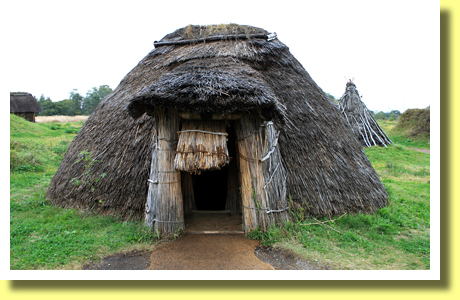
Jomon people settled here first around 5,900 years ago. They built and lived in pit houses. A pit house ( above reconstructed ) had a furnace on the floor, which was created by removing soil. Several hundreds pit houses were unearthed here. However at the time they lived here just on a temporary basis. They were still semi-nomadic. So they used not storehouse but holes to preserve food.
|
|
Pillar-supported Buildings
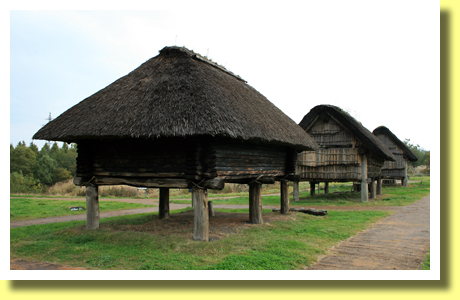
Around 4,900 years ago, people built pillar-suported buildings here by erecting pillars in holes as above ( reconstructed ). The inhabitants, who were more sedentary than the predecessors, preserved food in raised-floor buildings, which had no furnace.
|
|
Large Long Houses
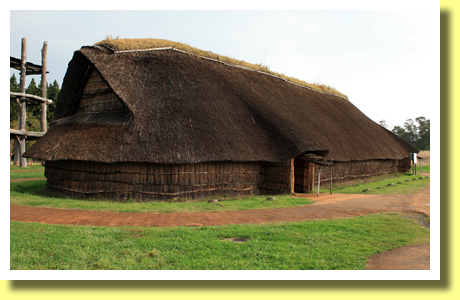
Some large long houses were built at Sannai-Maruyama Archaeological Site by Jomon people. Above shows a reconstructed model of the largest long house ( length 32m and width 9.8m ), which is thought to have been built around 4,300 years ago.
|
|
Inside of Large Long House
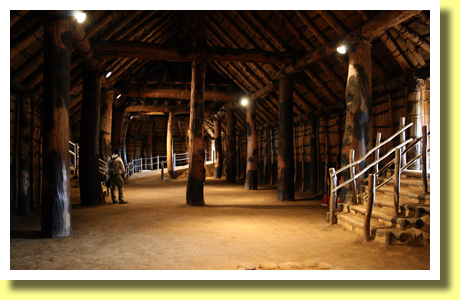
Above shows the inside of the reconstructed long house, which could have been a meeting place and/or a workshop of the inhabitants of the settlement. Also some people could have lived there.
|
|
Pillar-supported Tower
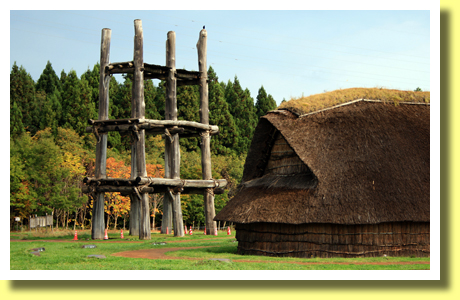
Around 4,600 years ago the inhabitants of the settlement built a pillar-supported tower, of which a reconstructed model is shown in above. Its pillars were erected in holes whose diameters and depth were about 2m. Pillars ( diameter about 1m ) were made of chestnut. At the time, chestnuts were grown in the settlement for harvest. The tower could have been a watchtower, a monument or a religious building.
|
|
Pottery Shards

Not only remains of structures but also middens and mounds were found and pottery shards, wood products, bones and many more artifacts were unearthed. a few parts of middens are preserved and showing lots of pottery shards ( above ) and so on.
|
|
Stone Tools
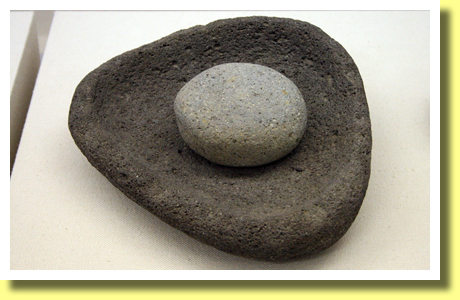
Not only earthenware but also various kinds of stone tools have been excavated. There at the site is a building where lots of unearthed artifacts are exhibited such as a mortar and grinding stone ( above ) which had been used to grind various nuts including chestnut fruits grown in the settlement.
|
|
Jomon Pottery

Here used to be settlements in Jomon Period. " Jomon " in Japanese means " cord-marked " in English. Many potteries, excavated at Sannai-Maruyama Archaeological Site, were cord-marked as above. Tourists could see lots of Jomon Potteries in the above-mentioned building.
|
|
Clay Figurines
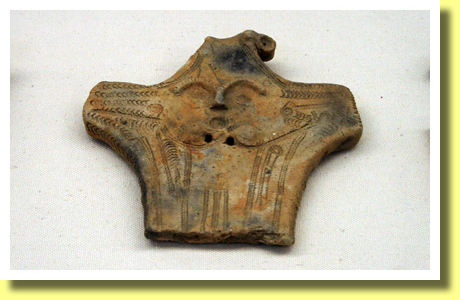
More than 2,000 flat clay figurines ( above ) have been excavated at the site and many are exhibited in the above-mentioned building as well. It is thought that such figurines had been used in the religious events.
|
|
Jomon Jiyukan
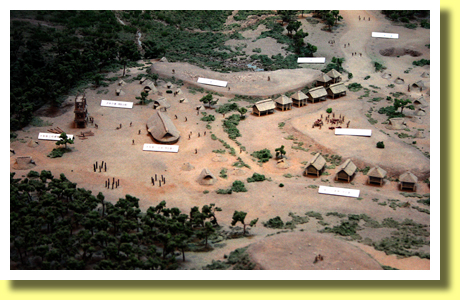
Sannai-Maruyama Archaeological Site is entered through Jomon Jiyukan where admission is paid. There in Jomon Jiyukan is a museum where tourists could see many related to the site such as reduced reconstruction model of the site as above. There are souvenir shop and restaurant in Jomon Jiyukan as well.
==> further details of Sannai-Maruyama Archaeological Site
|
|
Jomon followed by Yayoi
Rice farming started in Japanese archipelago around 1,000 B.C. - 800 B.C., which ended Jomon Period and Yayoi Period started. Yoshinogari archaeological site, located in Kyushu Region is one of the most important and famous Yayoi settlements. On the site of Yoshinogari settlement built was Yoshinogari Historical Park, which is so popular among tourists as well as Sannai-Maruyama.
|
Copyright (c) 2021 Achi-Kochi Zanmai Co., Ltd.
|